Cooperative games made by students
Throughout the week, students organized themselves into inter-school teams to develop game concepts. We ended the week with a day of public opening and testing of the game prototypes. Students had the occasion to get immediate feedback from various types of public including children. It was also a great exercise for them to present their work to an audience also composed of people out of the art and design field.
C'est la vie
Lilas Zerouati, Marion Benoist-Grandmaison, Sarah Sadoun, Sigmund Abou Chrouch
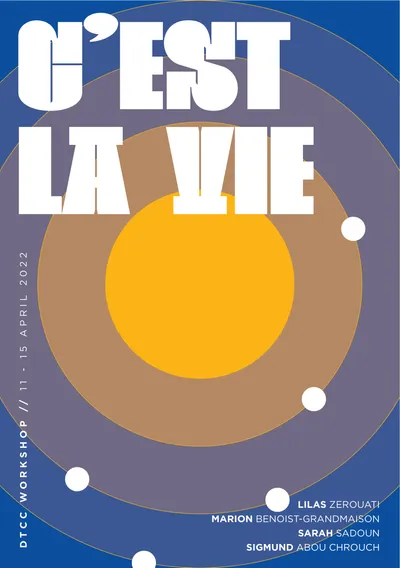
Game concept
The concept of the game is that all participants have to reach the center or the number 0. In order to move forward and reach your goal, there are challenges that need to be achieved. The challenges have certain restrictions. If successful, you get closer to the center. Except you're not the one doing the challenges. It's everyone participating in the game that are doing the challenge for you. And you moving closer to the center depends on how well they succeed in the given challenge.
Your success depends on their success.
Think of it this way: Life throws you challenges, and many restrictions come along. Many of them require your motivation but also the help of others. Sometimes you succeed and sometimes you don't. But you keep on trying. And that's life.
A small story for this game: "You thought you were just going to play cards with your friends. But a strange murmur is charming you from the center of the decks. You want to know more. You're curious. You try to get closer, but a thin wall is stopping you reaching that voice. Walls in the form of circles. You cannot go through alone. One challenge is given to have the chance of hearing this charm of a voice and finding the answer to your curiosity. That requires help. Bribes are in the way; the cards reveal a way for you to move closer and closer. But beware, those challenges hide glitches. You're bounded to the others. You cannot move with the others. Follow the voice, unite and find that murmur you're looking for."
Rules and restrictions of the game
The game is played by a minimum of five people.
- Each player will have a ticket that indicates their position.
- All players will begin at the same circle (depending on the number of players and rounds you'd like to play) but the minimum is 3.
- The youngest player gets the first call.
- You have two decks of cards, one deck that is the challenge given called "challenge" and the other that is restriction given for the challenge the player will do which is called "glitch".
- Shuffle each deck at every turn, then draw a card from each deck. You have to say what's the challenge and what's the restriction, but you cannot participate in it.
- Everyone on the same circle as the player calling the challenge, can choose to participate by raising their hand and getting around the caller.
- With each call, one should be devoted (a minimum of one player) and one should step aside. When the caller reveals the combination, a given time is set and the responders will have to coordinate to achieve the challenge together, as a scene.
- It's up to the player aside to decide if the challenge has been a success or not by raising their hand.
- If it's a success, the caller of the challenge moves to the next circle and chooses the next caller from the ones that have responded to their call.
- It the challenge was not a success; the next caller is chosen within the players that are aside.
When two people are alone in the same circle, they should go along with the same combination:
- In this case, each of them picks on other player, and the teams present their "answer" at the same time.
- The selected player goes on and chooses the next caller// or if it leaves a player behind the group (on the lower circle), everyone should join forces (even the caller) and "answer" the challenge for one to pass.
- The player keeps the call.
What was the process during the game design?
We started with the goal of creating a game that embodied the concept of "competitive by cooperation". This guiding principle helped us during the brainstorming and ideation process. We began by mentioning different game ideas that could fit into this category, such as Mario Party, Fall Guys, and Simon Says. We then proceeded to describe these games and identify common elements, such as the equal opportunities and fairness given to all players. It was a collection of bits and pieces from various games that we remembered, all falling under the theme of "competitive by cooperation".
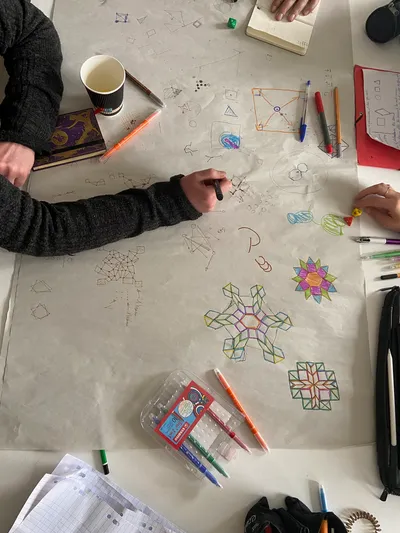
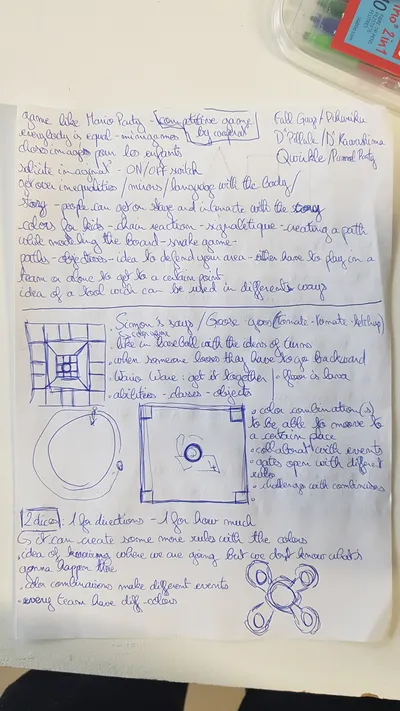
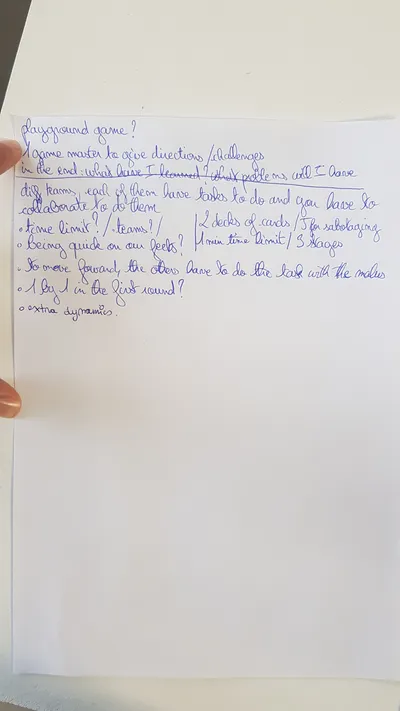
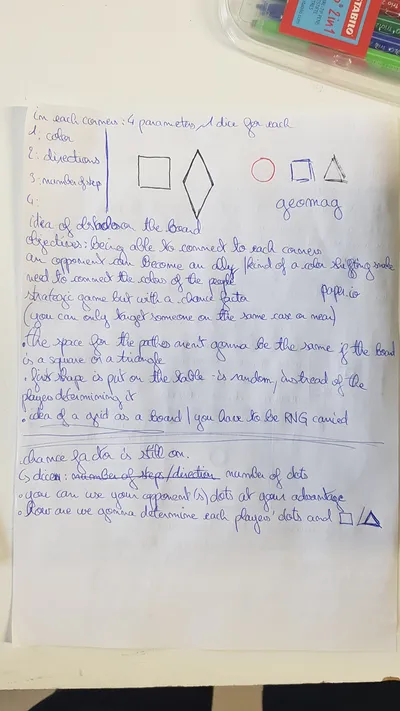
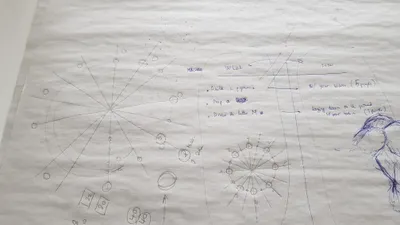
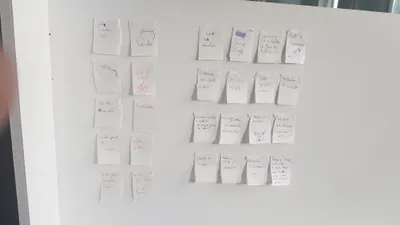
Iteration and Testing
For the iteration process, we relied on questioning every step and rule we implemented. As we progressed in laying down the possible platform, we constantly tore apart each idea by asking 'what if.' This approach allowed us to strip away unnecessary steps, rules, and gaps that the game might not need, ensuring that all players would remain engaged, progress, and enjoy the story.
Due to time constraints, we were unable to physically test the game extensively, as it requires a full immersion with a significant number of people for a time period exceeding 5 or 10 minutes. However, we conducted testing in two parts. Firstly, we showed our printed cards to various individuals and observed their curiosity and excitement as they imagined themselves undertaking the challenges and restrictions. Secondly, during the exhibition day, we witnessed the actual immersive experience of the game.
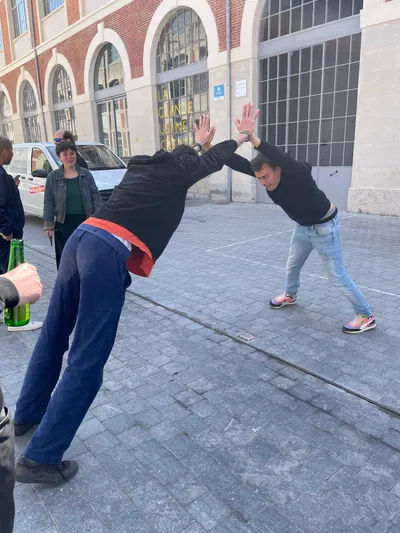
End Result
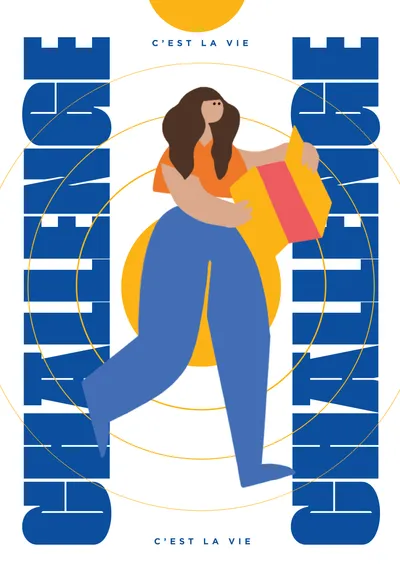
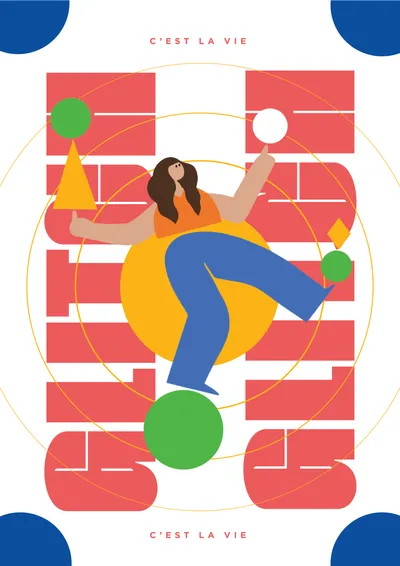
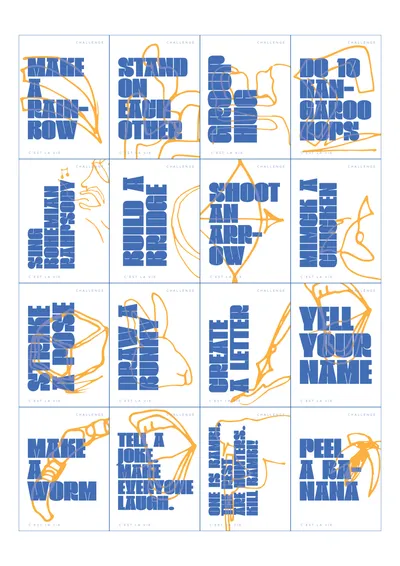
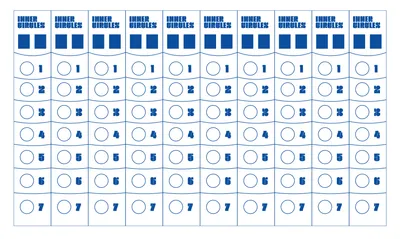

Spacimen
Sarah Hadjazi, Felix Häberle, Yareny Duriez
Game concept
Spacimen is a game about survival, which is why it combines elements of collaboration and competition. Up to four participants are given a limited amount of time to create and shape a Spacimen (creature) according to a set of predetermined parameters derived from a specific natural environment. These parameters are presented in the form of statements and a story, allowing players to imagine and interpret the world in their own unique way
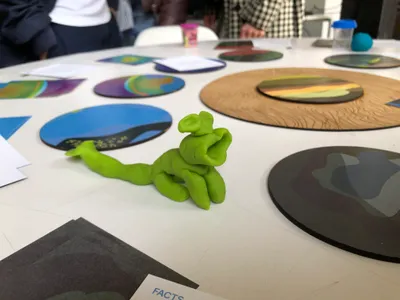
Rules of the game
- Shuffle the circular pieces of the Worlds and stack them face down.
- Group the 4 Facts & Scene cards according to the environments they represent and place them within reach of all players.
- Distribute an equal moment of clay to each player.
- The round begins when one of the Worlds pieces is placed in the center of the board.
- When the World is revealed, all players must take the corresponding card, read the Facts & Scene and keep it visible.
- Within 2 minutes, each player must build a Spacimen that can survive in the given World, following the Facts & Scene.
- Each player must defend how & why their Spacimen is the ideal inhabitant for the given World.
- Players must take notes, question, and assess every Spacimen's features based on their viability in the World's described in the Facts & Scene.
- 1 point is awarded for the best feature for each fact of the World.
- After defending their Spacimens and reviewing all the Facts have been revised, players must calculate their earned points.
- The player with the most points wins the round and the World. The player with no points loses the round and can't play in the next round.
- The round for the next World may begin.
Semi Final & Final Trial:
- When only one World remains, all Spacimens must collaborate.
- Before the assessment of the second-to-last World, all Spacimens must find a partner for the final round.
- The assessment proceeds as usual, but for the start of the final round, they must work in pairs. One person models, and the other person directs.
- The player with more points in this round wins. In case of a tie, the player with more Worlds wins overall.

Restrictions of the game
- Players have 2 minutes to shape their Spacimen according to the given environment
- Each fact represents a specific number of points, which determine the winner of the round.
- The players must collectively decide who earns the points for each environment and discuss the reasons behind their decisions.
What was the process during the game design?
- Understanding of the topic
- Research
- Analysis of the potential approach
- Exploration
- Ideation
- Definition of the product
- Manufacturing of the product

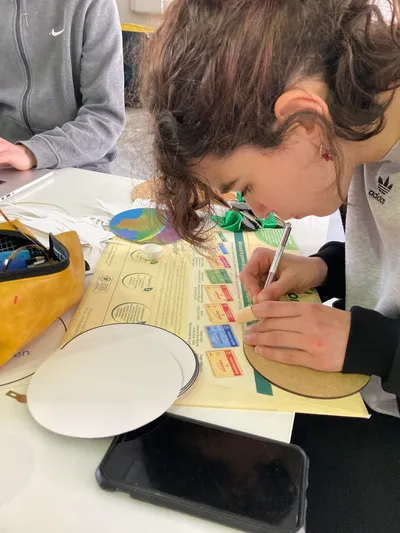
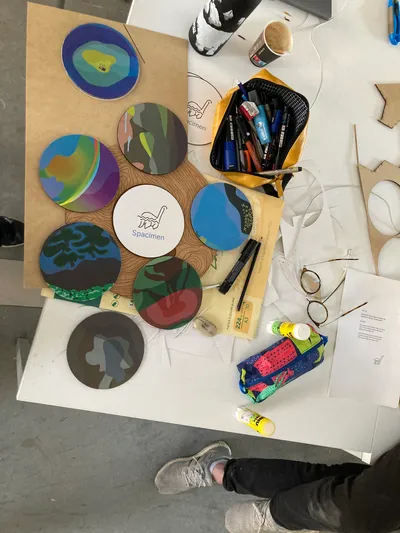

Iteration
The discussion of the rules was an ongoing process. We did a draft of the assumed rules, but definitely we had to try it out among ourselves and with others to actually understand the needed logic for the game to make sense and create a playful, yet collaborative & competitive environment as we have established our wish.
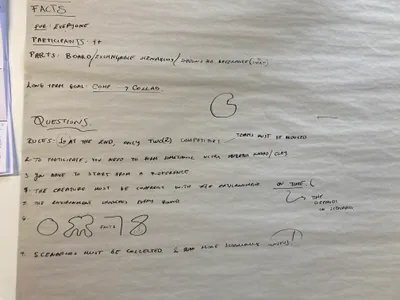
Testing
Before printing or cutting the pieces of the game, we tested the game with the illustrations of the environments for testing the needed time for shaping the creatures, to test with external audience if the illustration made sense with the narrative facts and to also measure how fun would the challenge and assessing the results be!
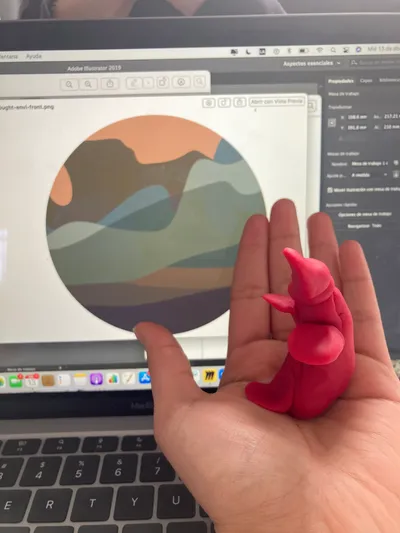

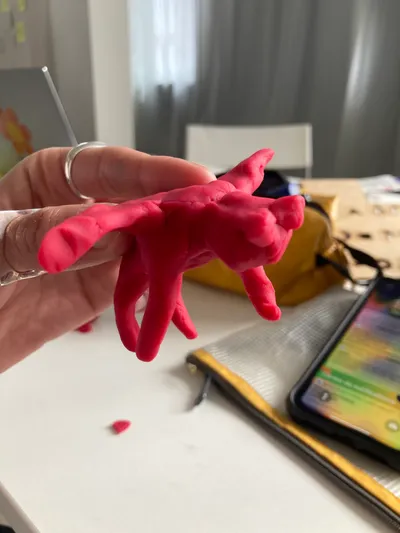
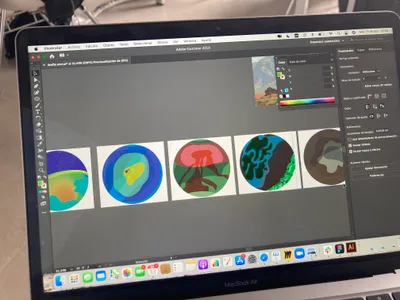
End Result
The final result demonstrated to be very fun for the audience. We saw smiles, laughs, debating, stress and engagement while playing, which successfully portrays the kind of game we wanted to design, searching for surprises that stimulate imagination but also provide perspective and stretch the standard way of thinking of the participants. We wanted for this game to also foster communication between the participants, in a debate form for taking decisions, as we believe that this would be a very good example of how collaboration and competition can exist in the same world.
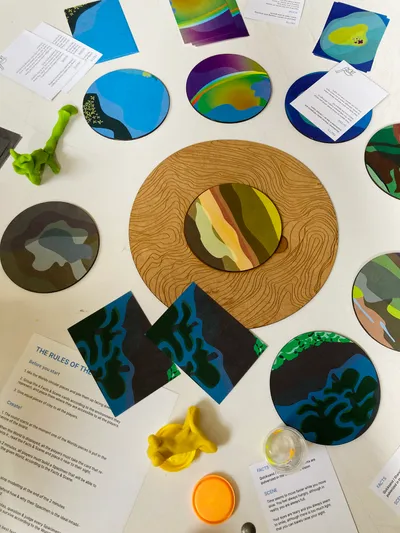
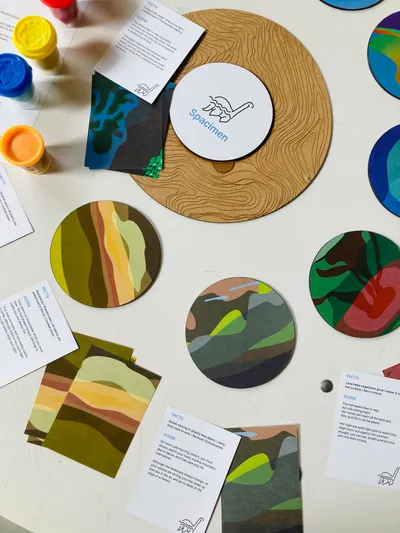
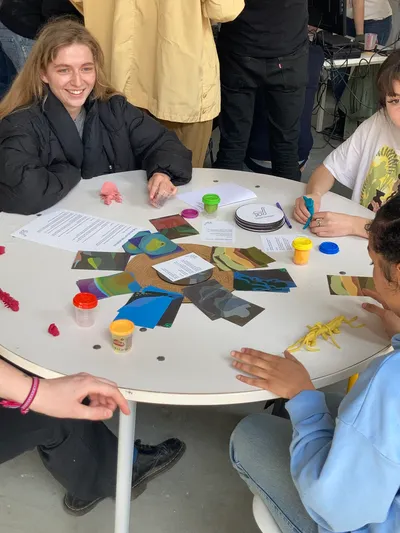
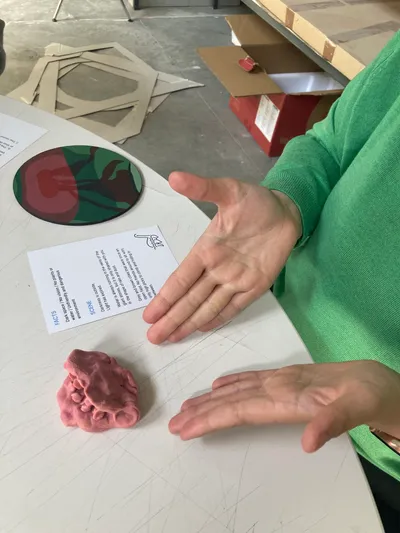
Progress
We are currently discussing how to improve the rules and the logical acquisition of points, aiming to create fewer controversies and make the decisions less subjective. We want to better align the point system with the elements of the game and the stories depicted in each world.

Aela
Natsumi Nonaka, Viki Schmidt, Dorothée Abaiadze

Game concept
Aela is a drawing game that can be enjoyed by people of all ages and encourages creativity. It is designed to be easy to understand and play, without a specific goal but focused on having fun. If you feel you have played enough, you should be able to stop playing at any time.
Rules of the game
- You need at least three people to play the game. Two people form a team, and the others guess.
- The team picks a keyword and both team members roll the dice. The displayed restriction is the rule they have to follow while drawing the keyword.
- Now, the team has 30 seconds to collaborate and create a drawing that represents the chosen keyword, using only drawings without talking.
- Once the 30 seconds are over, the other players have to guess the keyword based on both drawings.
- To continue game, form new teams and start the next round.
- Play for as long as you have fun. There's no winner or loser!
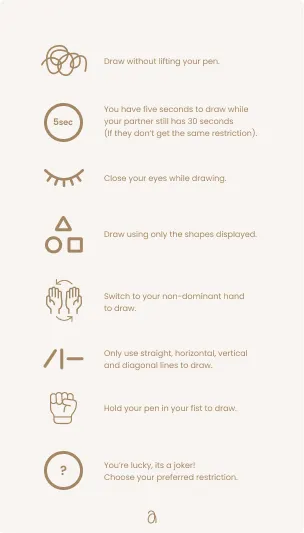
Restrictions of the game
Each player is given a restriction in drawing by the dice.
They are also given a 30-second time limit for drawing and a restriction not to speak while drawing.
What was the process during the game design
We started with just brainstorming around keywords like simple, body, random, collaborative. Afterwards we tried to connect different words and categories to combine them and formulate possible games out of it. Then we came up with different contexts like where should it be played and who should play it etc.
Iteration and testing
First, we came up with the idea of combining the whispering game with drawing. We also made a paper dice to give players constraints such as "draw without looking". When we tested it, we found that the constraint idea worked but it's too easy to play and the waiting time was boring. Next, based on the feedback in the first test, we changed our concept that two people working together to complete one picture instead of one person drawing each. We also increased the variety of constraints. In the second test, we saw participants enjoyed it much more than before. Finally, we made wood dices with 8 faces, 40 cards with keywords, and instruction paper. We selected keywords that are conceptual and can be interpreted differently by different people such as "sustainable".
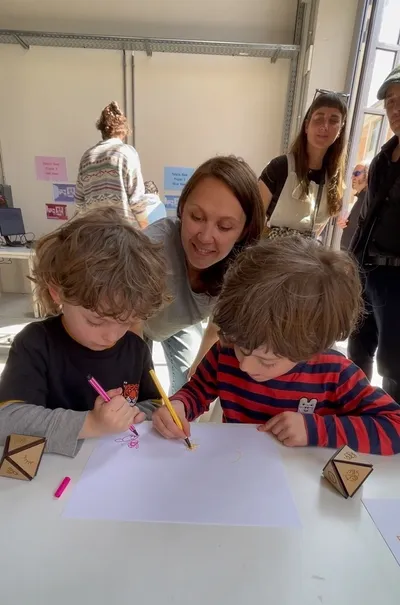
Collanque: a collaborative petanque
Morgane Rousseau, Helen Staak, Florens Schwendowius
Game concept
The concept of the game is that a group of people have to throw a ball collaboratively. They have to communicate well to coordinate their movement, so that the ball flies in the right direction.
Rules of the game
The game is played between two to four teams, each consisting of two to four players. Each team uses three balls. To start, place the tiny pink ball (called cochonnet) on the ground and distribute the different shapes around it, ensuring an equal distance of one large step between each shape.
Build teams and choose a color. Then, grab the fabric and balls of your team's chosen color. Position yourselves five large steps away from the cochonnet. In a team of four, each member gets a leash to grab. If there are only two players in the team, each team member gets two leashes to grab. Place a ball on top of the fabric. In a team of three, fold the opposite corners of the fabric to create a triangle.
The aim is to get as close as possible to the cochonnet. Repeat this step with the second and third ball. Once all the balls have been thrown, measure which ball is closest to the cochonnet. The team that has thrown this ball receives three points, while the team whose ball is furthest away receives a deduction of one point.
After counting the points, collect the balls and start a new round. The team that reaches nine points first is declared the winning team.
SHAPES When a thrown ball lands on a shape the team has to do an extra difficulty in the next throw: - Stand on one leg during the next throw. - Close your eyes during the next throw. - You're not allowed to speak during the next throw. - Throw from five steps further away during the next throw.
Restrictions of the game
Minimum two people in a team, maximum four. Minimum two teams, maximum four. For the best experience, it is recommended to be played outdoors, on grass, gravel or flat terrain, where the balls do not roll away or bounce too much.
What was the process during the game design
After going through a lot of ideas we landed on a concept, which we gave a working name "collaborative petanque". The initial inspiration came from two already existing games: petanque and parachute. As petanque is a very popular game around France, which we also saw played a lot around the school grounds, we wanted to take this already familiar concept and find ways to make it more collaborative.
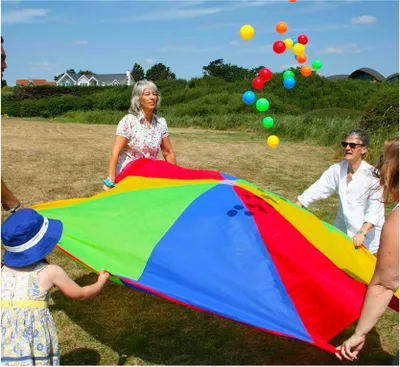
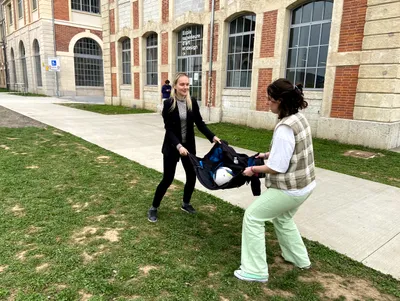
Iteration
Our first idea was to use the regular petanque boules and some kind of fabric that would be used to throw the boules. We tested the first idea of the game outside on the school grounds by using a stone and a jacket. When we saw that it could work, we started searching for materials to create our first prototype. We were able to use the leftover fabric from the Design Biennale and created our first version of the game. When the fabric was done, we tested it with different paper balls and then bought different sized balls from the store to see how they work with the game. We also moved away from the original formation of the petanque game, where people play the game one after each other in a line. We thought it might be much more emotional, when the teams are placed in a circle facing each other. After that we tested the game with two teams and different kinds of balls outside on grass. Everything seemed to work well, but we felt that the game was still missing something. We got a recommendation from our mentors that we could add some additional features to make the game more challenging. We decided to create shapes out of cardboard that could be put on the ground while playing and would challenge the players more. We also decided to add leashes to the fabric so it would be more comfortable to hold them. The final version of the shapes for the game were laser cut from plywood and we also decided to engrave the challenges on them, so they would always be visually there and easy to keep in mind while playing.

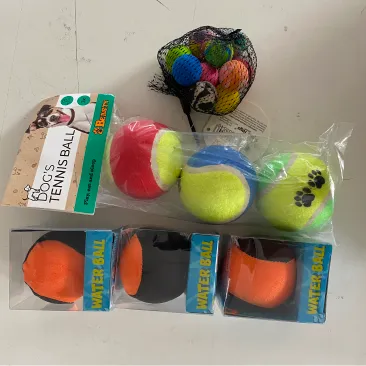
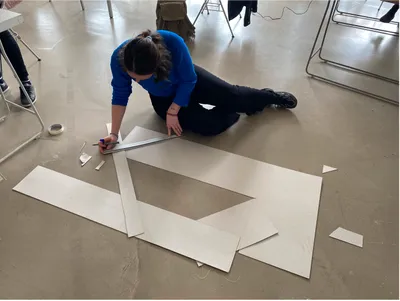
Testing
The testing was a crucial part in our design process. Right from the start we tested our ideas and developed them further with the experiences we made. While testing the game the participants had very interesting ideas for variations of the game that differed from the original idea.
Therefore, the game could additionally be used in other ways as well:
- Using the fabrics to throw and catch a ball in two teams of two to four people
- Using the circle shape in the middle to throw the ball through it and catch it with the fabric
- Using the circle in the middle on the ground and make the ball bounce in the middle of the circle
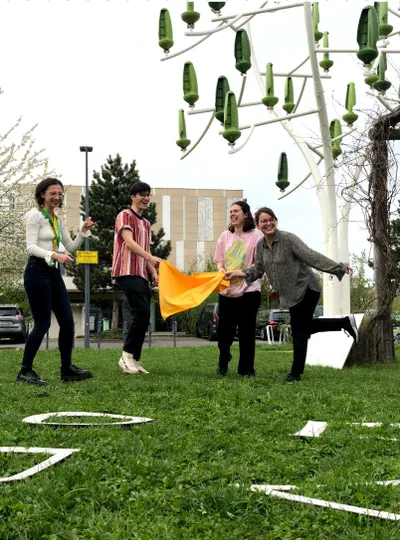
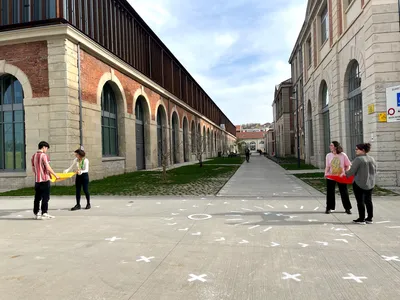
End Result
The end result is the game called 'Collanque.' The name is a combination of 'petanque,' the word for a French boules sport in which players play their balls towards a target ball. The game consists of one small ball to place in the middle, three different sized and weighted balls for each team to throw, fabrics for teams of two to four people to throw the balls with, and four different shapes to put on the ground for extra challenges.
Untitled game
Daisy Muntean, Mélissa Lenain, Kaisa Uik, Artemiy Guslistov
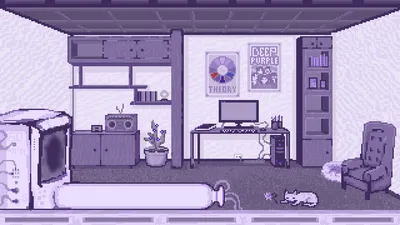
Game concept
You play as a designer who is always seeking new technology to improve their work. In pursuit of this, you purchased a brand new 5D printer from a dubious website. Excited to test its capabilities, you attempted to print a file, but to your surprise, it caused a rift, splitting your reality in half. Now, you and your friend must work together to merge the two realities back into one.
Rules of the game
Your room, which used to be purple, has been affected by the split in reality, resulting in two dimensions. As a consequence, your room, along with some objects within it, has been divided into the red room and the blue room. One player interacts with the split reality of the red room, while the other player is in the blue room. The objects in each room that are colored opposite to their surroundings hold the keys to restoring and fixing the merged reality.
When the objects affected by the split reality are placed into the 5D printer, they reveal riddles that provide codes for teleporting the objects to their respective realities. Some of the riddles require collaboration with your friend, as crucial hints are hidden in their room. The ultimate goal is to solve all the riddles and successfully merge the realities, allowing you to return to your original purple room.
Restrictions of the game
Communication with your friend is not possible within the game itself. As the game is designed to be played in different physical locations, you must find alternative ways to communicate, such as through phone calls or text messages, to emulate the experience of being in different realities. The game can be played offline, as it consists of two mystery games intended to be played simultaneously, with each game containing hints that are relevant to the other player's game.
What was the process during the game design?
Initially, we contemplated creating a detective or mystery game. While the basic idea was present from the start, the plot required some adjustments as it would serve as the central element of the game. We began by discussing the story of a physics professor whose science experiment went awry, resulting in the splitting of his reality into two separate dimensions.
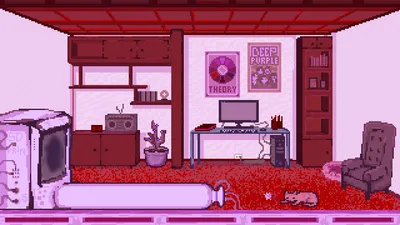
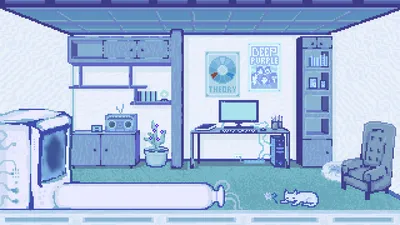
Progress
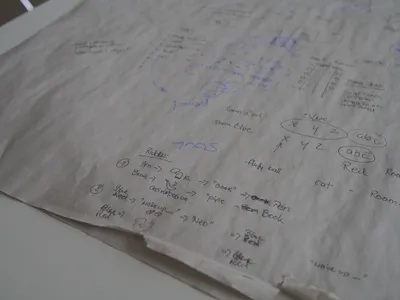
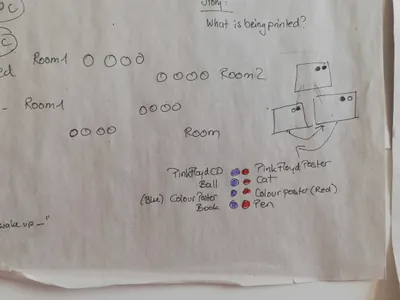


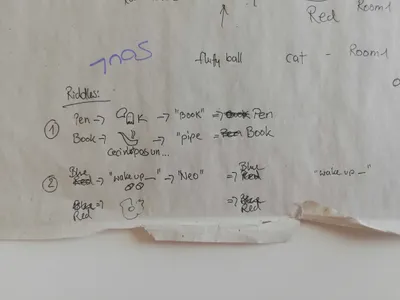
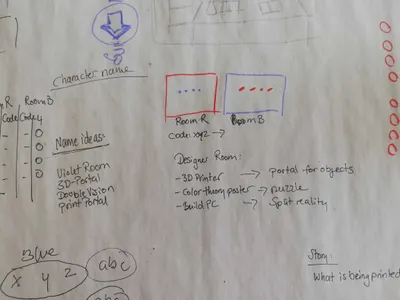
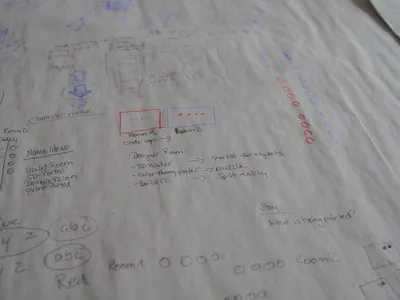
Testing
We created and developed various riddles, and then approached different people to solve them. The solving time varied, with some riddles proving more challenging while others were relatively straightforward. The difficulty often depended on the individual's experience and familiarity with the subject matter. Knowledge of pop culture references proved helpful during the solving process. Considering our target audience, we wanted to appeal to individuals who grew up with these pop culture moments and could share them with people from other generations. To ensure accessibility for everyone, we decided to include hints within the game.
The Cube
Maëlys Bard, Alféa Morelli, Mark Uustalu
Game concept
The Cube is a cooperative game designed for two players, combining elements of interactive storytelling and escape games. The game revolves around a story where one friend finds themselves trapped in a bar with no recollection of their whereabouts due to excessive drinking. They reach out to another friend for help and rescue. The objective is to successfully save the trapped friend, leading to a happy ending.
In the game, one player assumes the role of the trapped friend inside the bar. They navigate the bar through a series of images that they can switch between, exploring their surroundings to gather information that they must then relay to their friend. The other player engages with the game on a computer, presented with choices and riddles that they must communicate with their partner to answer correctly.
Rules of the game
You have to communicate with your partner in order to win. Spamming through answers is not allowed. You need to actually try to complete the riddles. You are not allowed to see what the other person sees.
Restrictions of the game
You can't inspect scenes in more detail.
What was the process during the game design
Firstly, we decided to create a video game. Then we came up with the idea of making it a storytelling game with choices and cooperative gameplay. We proceeded to sketch out the game's path and assigned tasks to each team member. The process went smoothly, and everyone actively contributed. While we all worked on the story, special thanks go to Maëlys for contributing most of the good ideas. Maëlys and Alféa created the 3D models and scenes using Blender, while Mark developed and coded the playable part of the game in Twine.

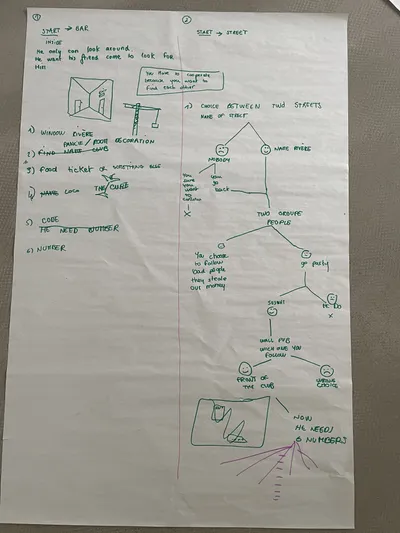
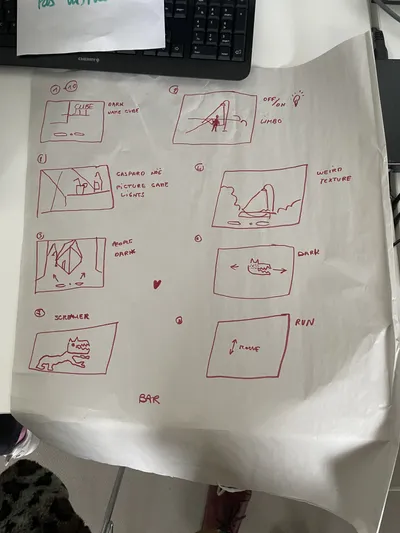

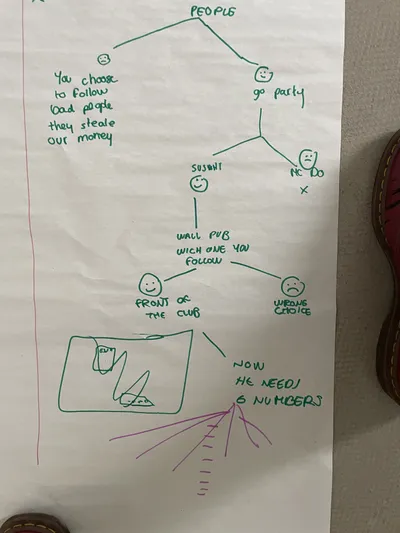
Iteration
The core loop of the game is to solve the riddles/answer the questions, communicate you're your teammate to make correct choices, win/die.
Testing
The gameplay was fully tested with a handful of different people, and we also discussed the idea with teachers and other individuals. Overall, everyone liked it.
End Result
End result came out like we imagined. We wanted to make a game that isn't just a basic prototype, but something truly playable.
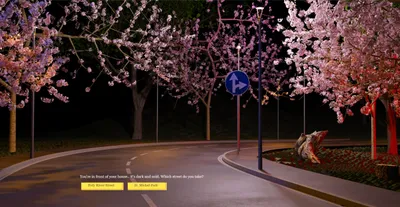
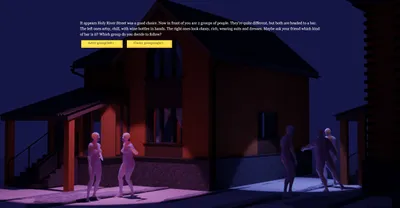

Metro
Alina Remlinger, Sarah Boutière, Katrin Koskela
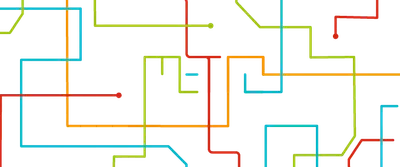
Inspiration
Our inspiration was the trax game. We liked the simplicity, the shapes and the intuitive way the game was designed. However, we wanted to design a game for more than two players, so we needed to bring the game to a higher complexity.
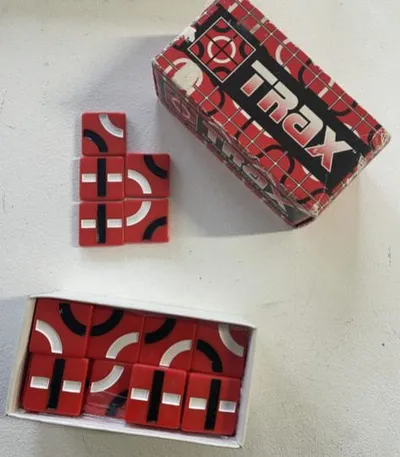
Ideas
So next up, we played with geometrical shapes and built different symbols, creating a puzzle that could be assembled into different symbols depending on the focus color. We prototyped this game on paper and were pleased with the results. However, we soon realized that it was a non-cooperative, single-player game. Therefore, while keeping the concept of different colored lines on each square, we decided to go back to the idea of tracks, incorporating a starting and an ending point.
Conception
To make the game more collaborative, we made the decision for each player to choose one color. Using the same concept of lines on the square cards, the goal is for players to connect the starting and ending points of their chosen color. During this phase, we were introduced to the game "Connect" by Ken Garland, which captivated us with its geometric and simple appearance. Additionally, we discovered the synonym of train or metro tracks, which further resonated with our game concept.
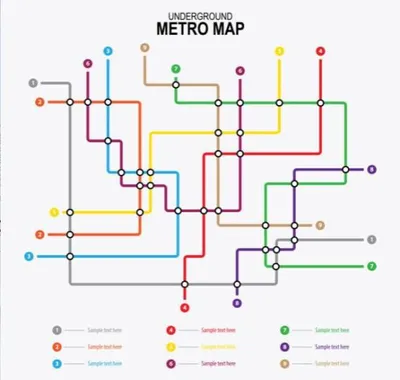
Paper prototype
We decided to create small squares with the various geometric shapes needed for our game in our initial paper prototype. During this stage, we discovered that there are numerous possible variations, which led us to the realization that we needed to determine the specific versions and quantity of cards required for a playable and enjoyable game.
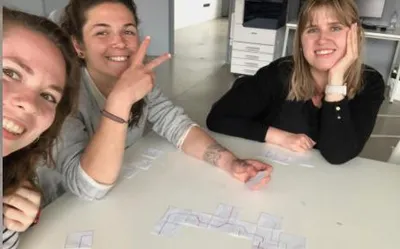
After creating the squares for the paper prototype, we gathered to play a round and refine the game's details. We soon realized the need to limit the number of colors on each tile and enforce the rule of having only one line exiting from each side. Without these restrictions, it would become excessively challenging to find matching pieces for the players to connect. As a result, we ended up with eleven distinct pieces, each with its own color variations
Materials
In the subsequent stages, we conducted tests using different materials for our pieces. We were particularly drawn to the concept of using clear plexiglass with colorful lines. To implement this, we created a testing document in Illustrator and used a laser cutter to engrave the lines onto the plexiglass. We then hand-colored the lines using Posca markers. The aesthetic result was pleasing, but we soon realized it lacked practicality in terms of usability. The one-sided pieces could be accidentally turned around, rendering the intended line restrictions ineffective. Our second version, which involved combining two pieces back-to-back, also proved confusing as it created the impression that all lines needed to be connected, which was not the case. Additionally, the painted lines were prone to scratching, making them less durable for repeated use.
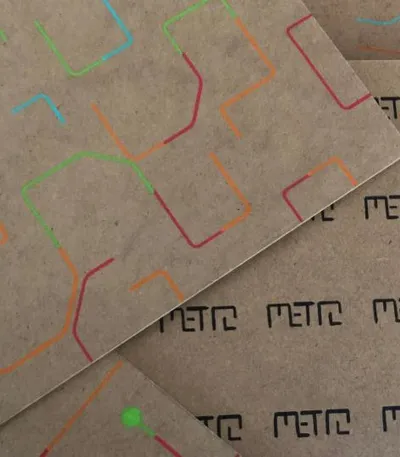
Our second test involved using pressed wood. We drew the lines on it using the AxiDraw and then cut it with the laser cutter. This material proved to be much better for the game, so we decided to use it for our final prototype.
Final game
Our game is called 'Metro,' and the goal is to complete the metro line and conclude your travels. It is designed for up to four players, with each player needing to complete their colored lines. Our final prototype consisted of 72 unique pieces and included the game instructions.
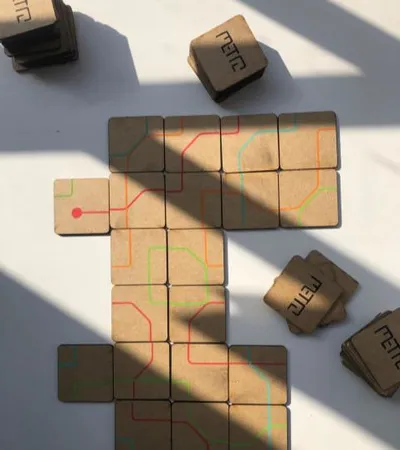
Rules
Game for two to four players.
Before the game:
- Each player chooses one color (orange, red, blue or green). The pieces with end and start points are part of the stack and must be found by drawing a new piece each turn.
- Each player gets three pieces, the remaining pieces are stacked on the side.
- The player whose birthday is next starts the game.
During the game:
- The player begins by drawing a piece from the stack or from the already constructed metro plan (not possible for the very first move)
- One of the four pieces must now be added to the metro plan.
- Pieces can only be added if the lines fit with all the surrounding pieces.
- Pieces must be placed in a way that each "empty" space has no more than two different colors ending it.
Congratulations!
The player who has both their starting and ending point of the metro line connected first, wins.
Conclusion and openings
During the first workshop in Tallinn, we had the feeling of passing an important step, this was also the case here.
The notions of collaboration, cooperation and participation appeared more complex than we had anticipated: it was the major topic of the week and students were invited to participate to the reflection on those notions.
The theme of games fulfilled its purpose to serve as a common cultural basis, with students tracking the tiny national differences of some of them and sharing games they like. It also allowed students to design games with the technical knowledge and tools at their disposal respectively within their team and within Esadse. Everyone was then in a kind of "comfort area" since no methods or tools were imposed.
The process of the game design also allowed us to step aside and move away, for a moment, from the digital and functional perspectives that we are used to.
Finally, we had the feeling that student had a great time and got the chance to know better each other's, mostly by working together in international teams. Their differences in methods were less visible than in the previous workshop and were mostly perceived as an added value.